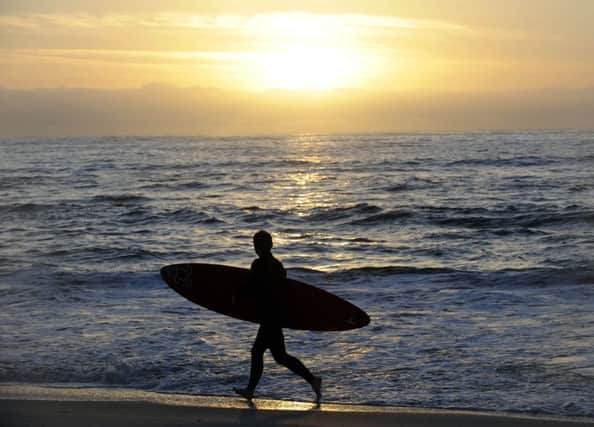Roger Cox: Every surfer's experience is different


Alex Wade perhaps produced the definitive literary GB surf lap in 2007 with Surf Nation, a richly textured account of our various different surf zones and tribes that also took in Ireland for good measure. Then, in 2010, Tom Anderson – author of one of my favourite surfing books of all time, Riding the Magic Carpet – gave us Grey Skies, Green Waves: A Surfer’s Journey Around the UK and Ireland. You’d think that might be enough variations on the theme for the time being, but no – Sandstone Press have just published another one: Around the Coast in Eighty Waves by Jonathan Bennett. The beauty of surfing, though, is that it is the ultimate ephemeral, unrepeatable experience: every wave is a little bit different, and every surfer is, too. So although in terms of its premise Bennett’s book may sound very similar to its predecessors, in fact it’s a completely different beast.
In spite of his journalistic background Bennett abandons any pretence of writing a social history early on. Just 13 surf-spots into his odyssey, while exploring Scotland’s wave-rich north coast, he decides to attend a sheep dog trial at Balnakeil. “I thought it would be a good way to meet some locals and gather material I could use if I ever got round to writing a book about the trip,” he writes. “I was right on both counts, and for a while imagined attending idiosyncratic events the length of the British coastline in order to pack my narrative with colourful characters and unusual anecdotes. Fortunately for both of us, patient reader, it was my last conscious attempt at conjuring up material. After this, it’s just surfing, more or less.”
Advertisement
Hide AdAdvertisement
Hide AdIn contrast to Wade’s book, then, there are no attempts to track down and interview any of the more interesting or influential surfers in each different surf zone – Bennett puts himself firmly at the centre of the story. And in contrast to Anderson – an accomplished surfer, whose Riding the Magic Carpet detailed his painstaking preparation for surfing the mythical waves at Jeffrey’s Bay in South Africa, not just adequately, but well – Bennett makes no bones about the fact that he is very much an intermediate.
What we’re left with, then, is a hit-and-miss surf trip around the British coast in the company of an affable, middle-aged everysurfer, but far from being a handicap, the universality of the tale is part of its appeal. Like Orkney surf scribe David C Flanagan’s book Board, published last year, one of Bennett’s great strengths is his disarming honesty – when he’s scared, he says so; when he’s struggling, he admits as much. Elite surfers may look down their noses when reading about some of Bennett’s less-than-glorious sessions, but average surfers – and that’s most of us – will empathise with much of what he has to say.
The whistle-stop nature of Bennett’s lap of Great Britain (he ended up losing count and surfed a total of 87 different spots in 14 months) meant that he didn’t catch every single wave in its best possible shape. Often, in order to complete his challenge, he was forced to surf grade-A breaks in less than grade-A conditions. Sometimes – as in the case of miserable-sounding Joss Bay in Kent – he was forced to surf average breaks in awful conditions. Surfers around the country, though, will be intrigued to discover what this interloper made of their favourite spots. Some, if they’re anything like me, might also get a little touchy about some of his observations. For example, while I’d be the first to admit that Pease Bay near Edinburgh is perhaps not the most aesthetically pleasing surf spot in Scotland, his characterisation of it as “a supermarket check-out girl whose indifference and cheap make-up can’t quite conceal her natural beauty” made me flinch a little – as did the reference to “the distinct smell of human sewage” in the water there, even though it’s something that’s been well-documented. Similarly, as a long-time devotee of Balevullin on Tiree – a stunning wave when the conditions are right – I was disappointed to find that he’d surfed it on a mediocre day, and felt a strange urge to defend its honour by tracking him down and showing him pictures of it looking its best.
Still, I suppose that’s the beauty of surfing and surf writing – every wave is different, every surfer is different. I wonder who will be next to complete the surfing lap of Britain, and what their book will be like?